 CrePS/USIT Paper: CrePS/USIT Paper: |

 
|
USIT: A Concise Process for Creative Problem Solving
Based on the Paradigm of 'Six-Box Scheme’
-- USIT Manual and USIT Case Studies -- |
Toru Nakagawa (Osaka Gakuin University)
|
Presented at ETRIA TRIZ Future Conference,
held at Berlin, Germany, on Oct. 26-29, 2015
|
(A) Presentation slides
|
| Posted on May 31, 2016 |
For going back to Japanese pages, press  buttons.
buttons.
 Editor's Note (Toru Nakagawa, May 15, 2016)
Editor's Note (Toru Nakagawa, May 15, 2016)
See the parent page  in HTML. This is the subsidiiary (A) page in the table below:
in HTML. This is the subsidiiary (A) page in the table below:
Table of Contents (Presentation slides, Oct. 27. 2015)
1. Introduction: Outline of the Talk
A. 'Six-Box Scheme' as the new paradigm
The 'Six-Box Scheme'
Conventional basic scheme for Creative Problem Solving (Four-Box Scheme of Abstraction)
Tools of TRIZ
Expected Areas of Applying TRIZ
New target at a higher level
Various
methods for creative problem solving; Integration of them
B. USIT: A Concise Process of Creative Problem Solving
Overall view of the USIT process (in 'Six-Box Scheme')
USIT Manual
USIT Case Studies
USIT Case Study 4 (Overview): Picture hanging kit problem
USIT Step3: Generate ideas (1) Write down the ideas stimulated
by the analyses
USIT Step 3: Generate ideas: (2) Extended ideas with USIT operators
Concluding Remarks
The current status of research on CrePS/TRIZ/USIT
On-going research activities for developing CrePS
 (A) Presentation Slides ==> PDF
(A) Presentation Slides ==> PDF  (25 slides, 346 KB)
(25 slides, 346 KB)
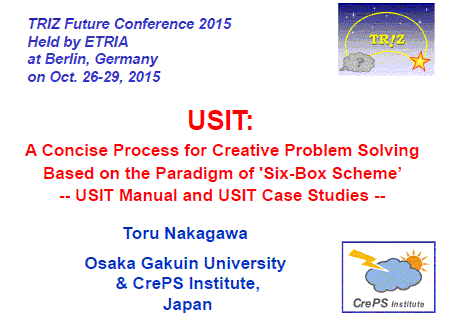
Introduction: Outline of the Talk
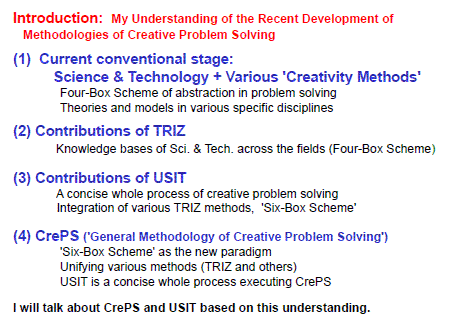
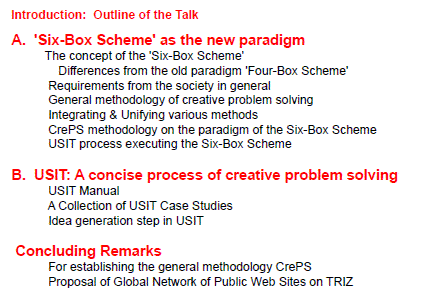
A. 'Six-Box Scheme' as the new paradigm
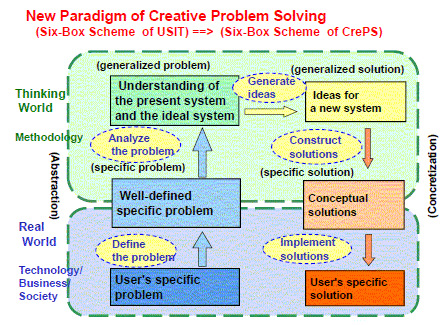
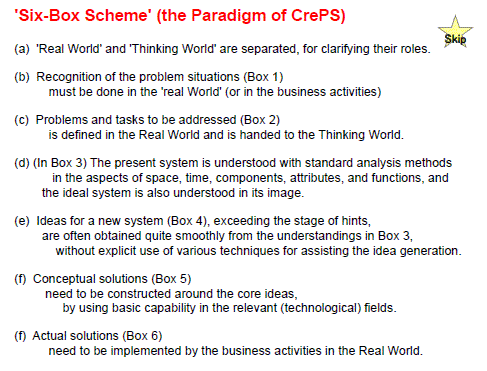
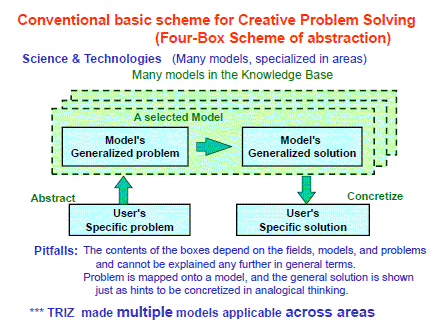
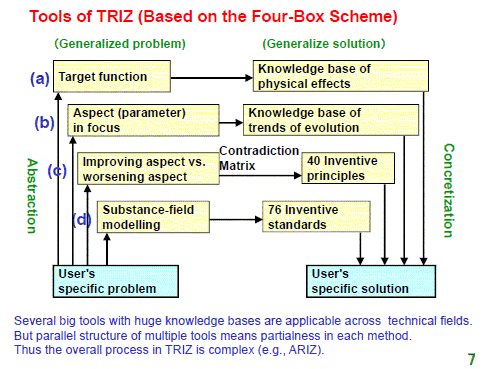
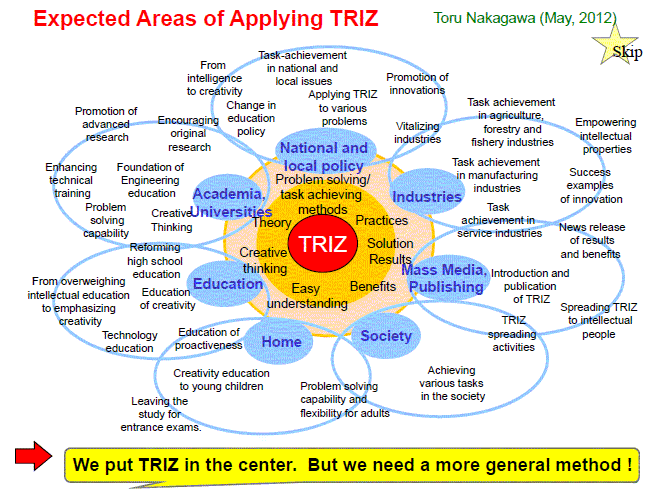
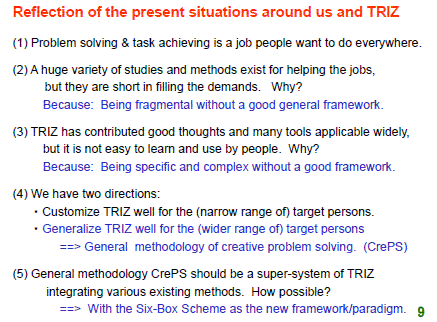
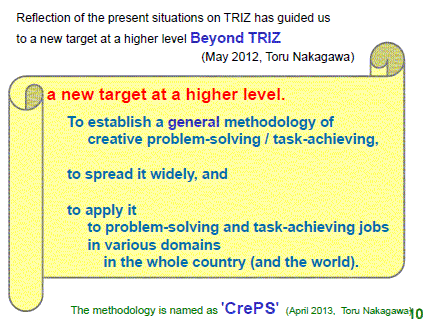
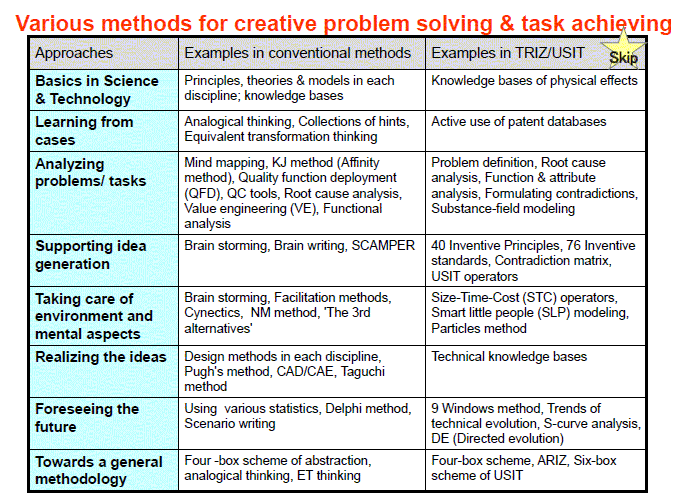
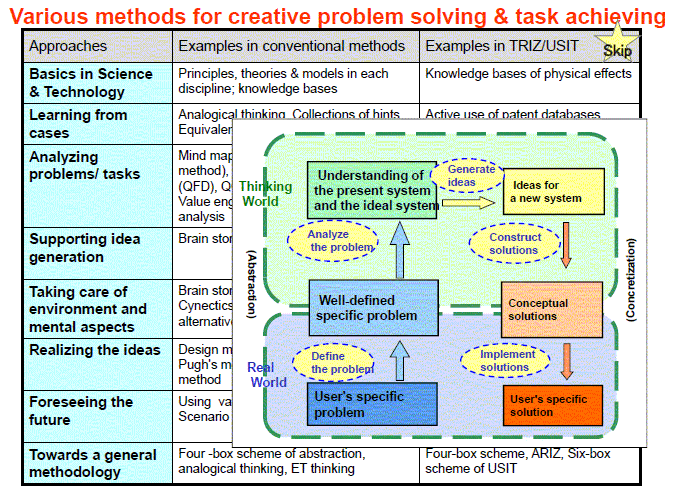
B. USIT: A Concise Process of Creative Problem Solving
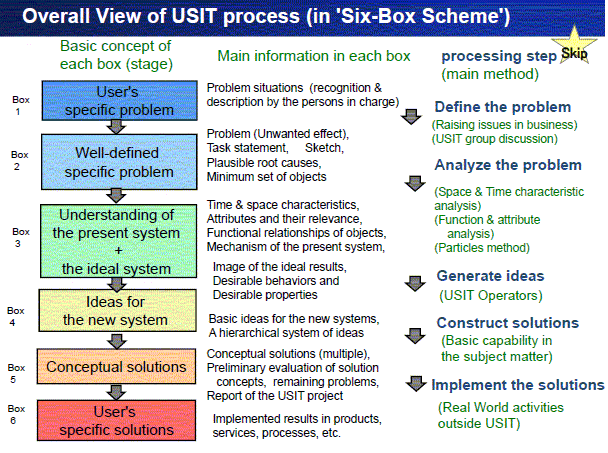
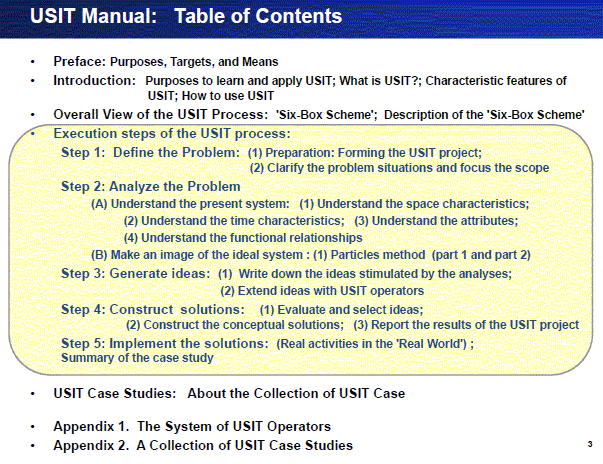
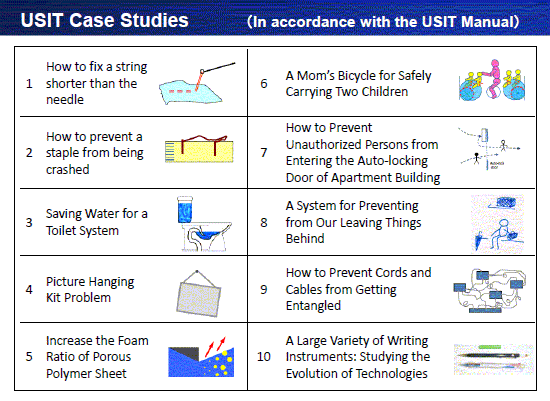
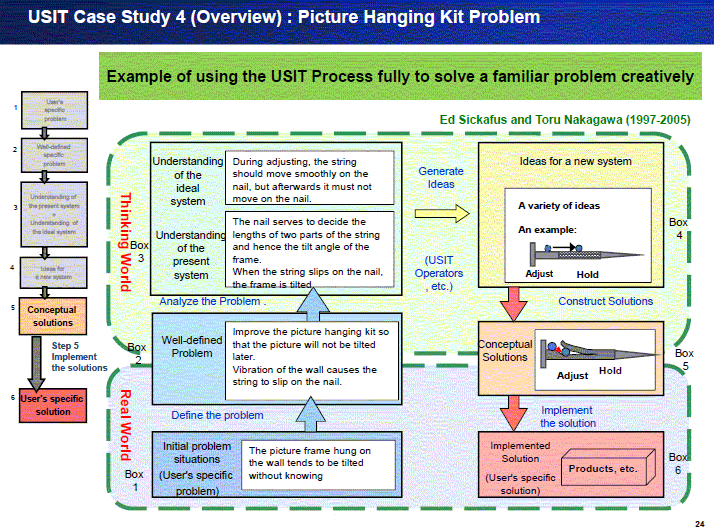
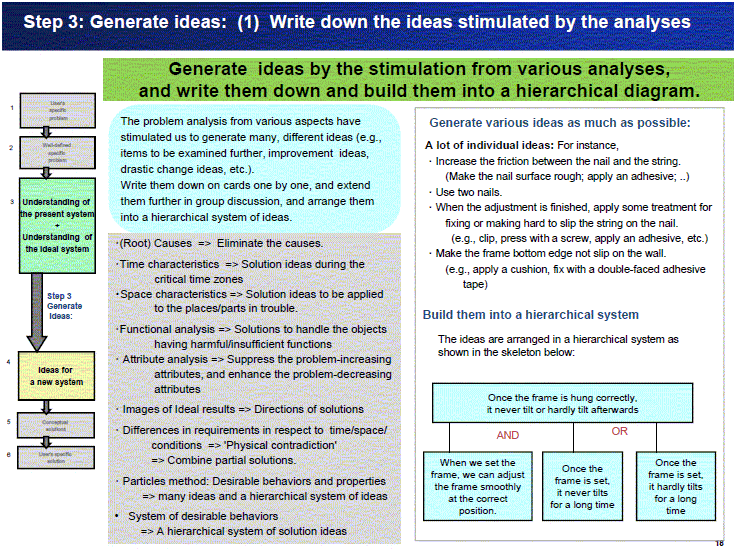
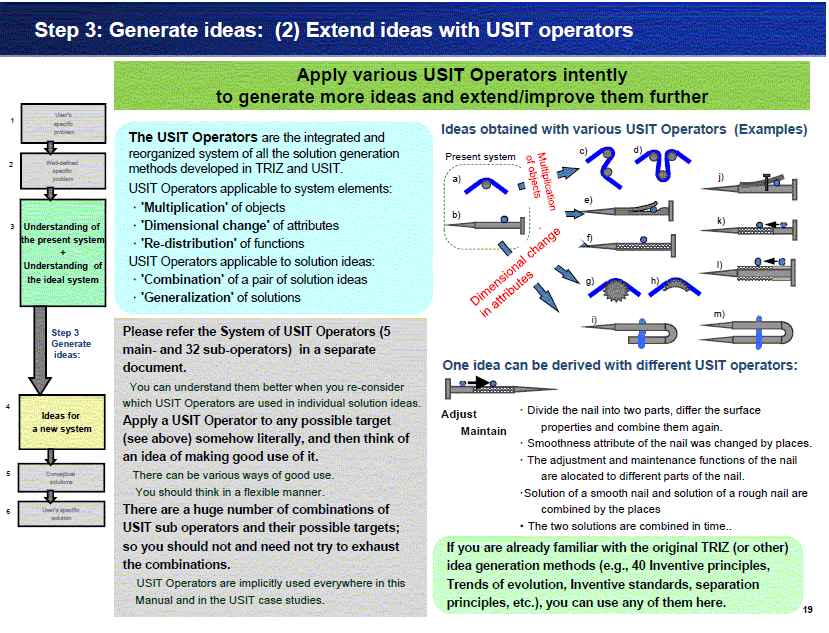
Concluding Remarks
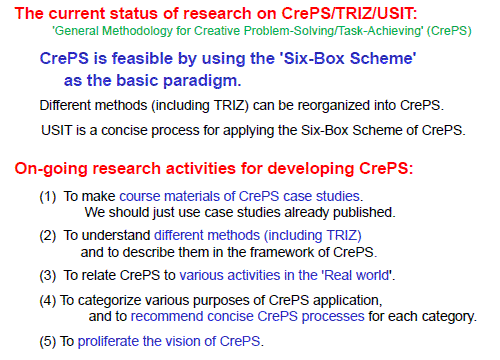
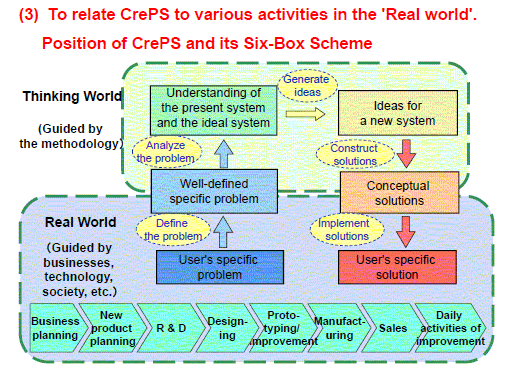
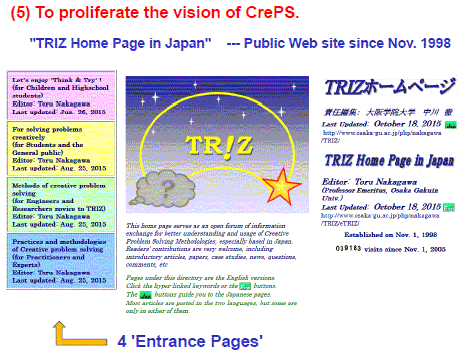
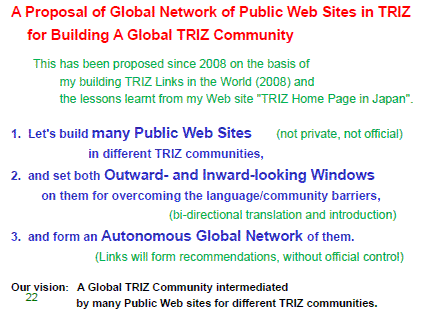
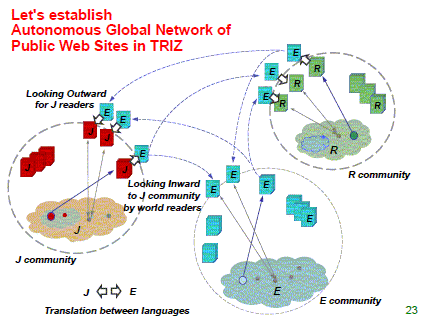
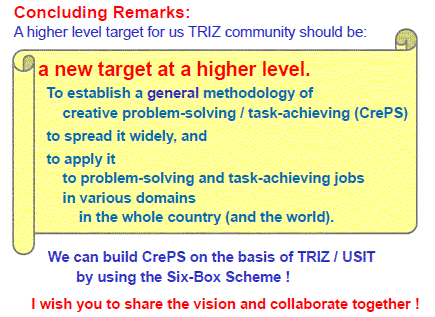
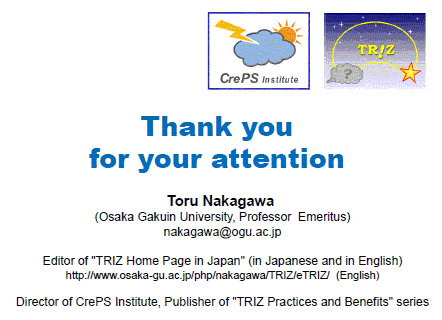
Last updated
on May 31, 2016 Access point: Editor: nakagawa@ogu.ac.jp
























